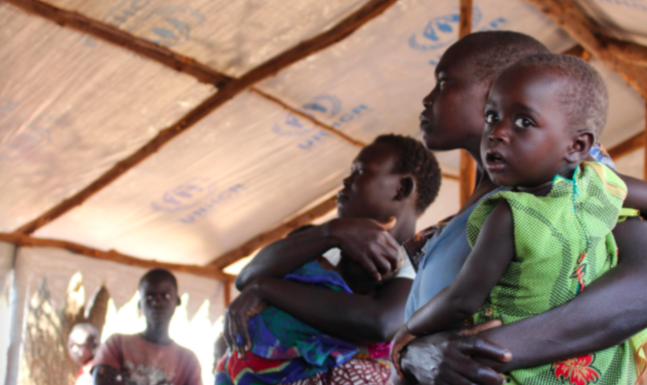Italian Buddhist Union
THE PROJECT
ACAV has always worked in collaboration with local communities and authorities. During some coordination meetings, these latter ones had brought out the urgent need to repair more than 100 water sources in the Arua district, which hosts the Rhino refugee camp.
In spite of the crisis in the bordering South Sudan, which began in 2016, Uganda has hosted more than a million refugees causing a high pressure on the poor resources of the region. The huge amount of people benefiting from hydric resources has also caused the breaking of various water sources.
By means of this project, 20 no-longer-working water wells have been revived both in the refugee camp and in the nearby villages allowing 20.000 people to have free access to drinkable water.
WHERE: Arua district, West Nile, Uganda
LOCAL PARTNERS: Arua District, UNHCR United Nations’ High Commissioner for Refugees, OPM Office of the Prime Minister

THE CONTEXT
The South Sudanese crisis, which began in 2013 and worsened in 2016, has caused an incomparable refugees’ exodus. More than a million South Sudaneses have found hospitality in the neighboring Uganda, which boasts one of the most welcoming policy in the world. Even though the influxes are decreasing, the South Sudanese population living in the West Nile sub-region remains high. In the Rhino refugee camp, more than 110.000 refugees could be counted in 2018, among which the large majority included women and children.
The refugee influx has tripled the population based in the West Nile sub-region which has logically caused a high pressure on the poor basic services of the region.
The water supply is often irregular and the inhabitants provide for it through trucks depending on road conditions. Access to water is one of the most critical points for the pacific cohabitation between the hosting community and the refugees most of all during the dry season.
WHAT ARE WE DOING?
Main objective: improving the hydric situation in favour of the welcoming community and of the refugees in order to prevent some possible epidemics related to the consumption of contaminated water.
Specific objectives:
- Increasing the access to clean water sources
- Improving health and prevent possible epidemics

WHO IS THIS PROJECT FOR?
20.000 people, South Sudanese refugees and Ugandans both living in neighboring villages and in the refugee camp are directly benefiting from this project. The great majority of them will be women and children.
110.345 indirect beneficiaries (Rhino Camp population)

OUR ACTIVITIES
- Information and people’ awareness about basic hygienic practices and about the proper use of revived water sources, establishment of water clubs and water administrative committees
- Rehabilitation of 20 water wells
- Awareness and project visibility

SUSTAINABILITY
The water wells rehabilitation in the refugee camp and in its neighborhoods meets the need of water emergency. Despite being a punctual intervention directly related to this crisis, revived wells will be used by local Ugandan communities once the refugee crisis is over. In order to enhance the sustainability of this project, we have also planned training for 20 administrative committees: every committee will take care of one water well with the aim of preserving and keeping the water source in a proper state over the years.
FUNDS










Leave a Reply